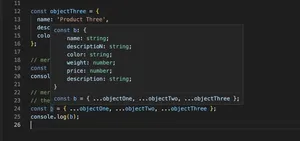Introduction
TypeScript namespaces are a way to organize code into hierarchical groupings and manage named objects to avoid naming collisions. This guide provides a detailed overview of using namespaces with practical code examples.
Understanding Namespaces
In TypeScript, namespaces are used to group logically related code constructs like interfaces, classes, functions, and variables. Namespaces can be considered as a ‘module’ that contains its internal logic separated from the outer scope, thus preventing global namespace pollution and name conflicts.
namespace MyNamespace {
export class MyClass {}
export function myFunction() {}
export const myVariable = 42;
}
Basic Namespace Syntax
Declaring a namespace in TypeScript is straightforward using the namespace keyword. You then place the related code inside curly braces, prefacing exports with the export keyword so they can be accessible outside the namespace.
Nesting Namespaces
Namespaces can be nested within each other for further organization and hierarchical structuring.
namespace Outer {
export namespace Inner {
export class NestedClass {}
}
}
Splitting Namespaces Across Files
Large codebases may require splitting a namespace across multiple files for better maintainability. You can do this using the // /// directive at the top of your files:
// File: MyNamespace_Part1.ts
namespace MyNamespace {
export class MyClass {}
}
// File: MyNamespace_Part2.ts
///
namespace MyNamespace {
export function myFunction() {}
}
Using Namespaces
Once you have defined your namespaces and the structure within, you can use the namespaced entities by their fully qualified names.
let instance = new MyNamespace.MyClass();
MyNamespace.myFunction();
Aliasing
Sometimes, using fully qualified names is verbose, so TypeScript allows aliasing:
import MyClass = MyNamespace.MyClass;
let instance = new MyClass();
Merging Namespaces with Functions/Classes
TypeScript also supports an advanced feature where namespaces can be merged with functions and classes.
function MyFunction() {}
namespace MyFunction {
export const meaning = 42;
}
// Example usage:
MyFunction();
console.log(MyFunction.meaning);
Namespaces vs. Modules
While namespaces are powerful, TypeScript much favors modules for code organization. Unlike namespaces, modules do not require export declarations and work across files naturally.
// myModule.ts
export class MyClass {}
// otherFile.ts
import { MyClass } from './myModule';
Transitioning to modules is recommended when working on a module-based system such as Node.js or front-end frameworks that use bundlers like Webpack.
Best Practices
Although namespaces are not commonly used in modern TypeScript development due to the adoption of modules, there are scenarios where they are useful. It’s important to adhere to best practices when using them:
- Be consistent with namespacing conventions across your project.
- Prefer modules over namespaces when working with a module loader.
- Avoid deep nesting of namespaces to maintain code readability.
- Use aliasing to shorten lengthy namespaced references where appropriate.
Conclusion
TypeScript namespaces provide a useful tool for grouping related code entities and avoiding naming collisions. While they can be useful in specific cases, modern TypeScript development trends towards the use of modules. Understanding how and when to utilize namespaces remains a valuable skill for TypeScript developers.
